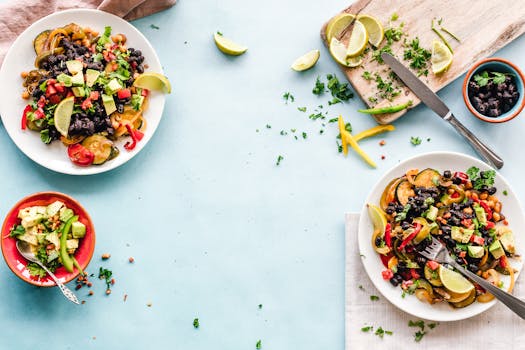How to Cook Healthy and Economically Using Simple and Affordable Ingredients
In today’s fast-paced world, many people struggle to maintain a healthy diet while keeping their grocery bills in check. However, cooking healthy meals doesn’t have to be expensive or complicated. By focusing on simple and affordable ingredients, anyone can create nutritious meals that are both satisfying and budget-friendly. This article will explore practical strategies for cooking healthy and economically, along with tips and examples to help you get started.
Understanding the Importance of Healthy Eating
Healthy eating is crucial for maintaining overall well-being. A balanced diet can help prevent chronic diseases, improve mental health, and enhance energy levels. According to the World Health Organization, unhealthy diets are a significant risk factor for diseases such as obesity, diabetes, and heart disease. By prioritizing healthy eating, individuals can improve their quality of life while also managing their finances.
Choosing Affordable Ingredients
One of the keys to cooking economically is selecting affordable ingredients that are also nutritious. Here are some budget-friendly staples to consider:
- Whole grains: Brown rice, quinoa, and oats are not only filling but also packed with nutrients.
- Legumes: Beans, lentils, and chickpeas are excellent sources of protein and fiber, and they are often very inexpensive.
- Seasonal vegetables: Buying vegetables that are in season can significantly reduce costs while ensuring freshness.
- Frozen fruits and vegetables: These can be more affordable than fresh produce and retain their nutritional value.
- Eggs: A versatile and affordable source of protein that can be used in various dishes.
Meal Planning and Preparation
Effective meal planning is essential for cooking healthy meals on a budget. By planning your meals in advance, you can avoid impulse purchases and reduce food waste. Here are some tips for successful meal planning:
- Create a weekly menu: Outline your meals for the week, including breakfast, lunch, and dinner.
- Make a shopping list: Based on your menu, create a list of ingredients you need to buy, which helps prevent overspending.
- Batch cooking: Prepare large quantities of meals and freeze portions for later use. This saves time and money.
- Use leftovers creatively: Transform leftover ingredients into new meals to minimize waste.
Simple and Healthy Recipes
Here are a few simple and healthy recipes that utilize affordable ingredients:
Vegetable Stir-Fry
This quick and easy dish can be customized with whatever vegetables you have on hand.
- Ingredients: Seasonal vegetables (e.g., bell peppers, broccoli, carrots), soy sauce, garlic, and brown rice.
- Instructions: Sauté garlic in a pan, add vegetables, and stir-fry until tender. Serve over cooked brown rice with a splash of soy sauce.
Lentil Soup
A hearty and nutritious soup that is perfect for meal prep.
- Ingredients: Lentils, diced tomatoes, carrots, celery, onion, and vegetable broth.
- Instructions: Sauté onion, carrots, and celery in a pot. Add lentils, tomatoes, and broth. Simmer until lentils are tender.
Case Studies: Real-Life Examples
Many individuals and families have successfully adopted healthy eating habits on a budget. For instance, a family of four in a suburban area managed to reduce their grocery bill by 30% by implementing meal planning and focusing on whole foods. They reported feeling healthier and more energetic, attributing their success to the use of affordable ingredients and cooking at home.
Another example is a college student who learned to cook simple meals using a limited budget. By purchasing bulk grains and legumes, they were able to create a variety of dishes while spending less than $30 a week on groceries.
Conclusion
Cooking healthy and economically is achievable with the right strategies and mindset. By choosing affordable ingredients, planning meals, and utilizing simple recipes, anyone can enjoy nutritious meals without breaking the bank. Remember, healthy eating is not just about the cost; it’s about making informed choices that benefit both your health and your wallet. Start small, experiment with different ingredients, and enjoy the journey of cooking delicious and healthy meals at home.
